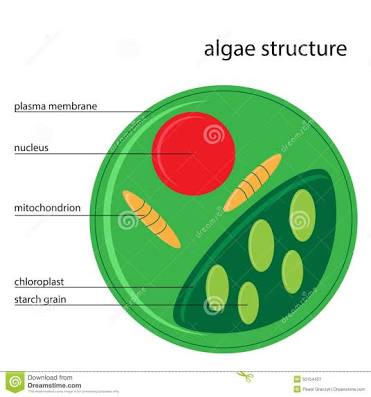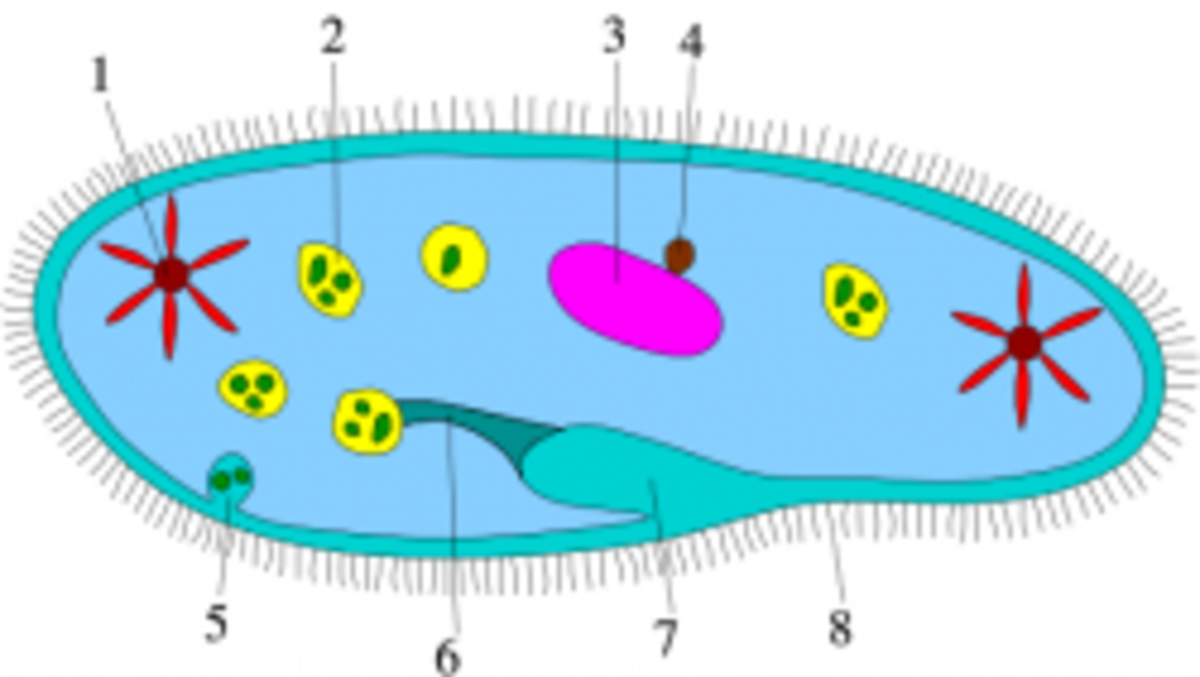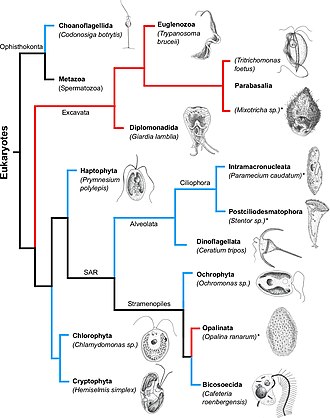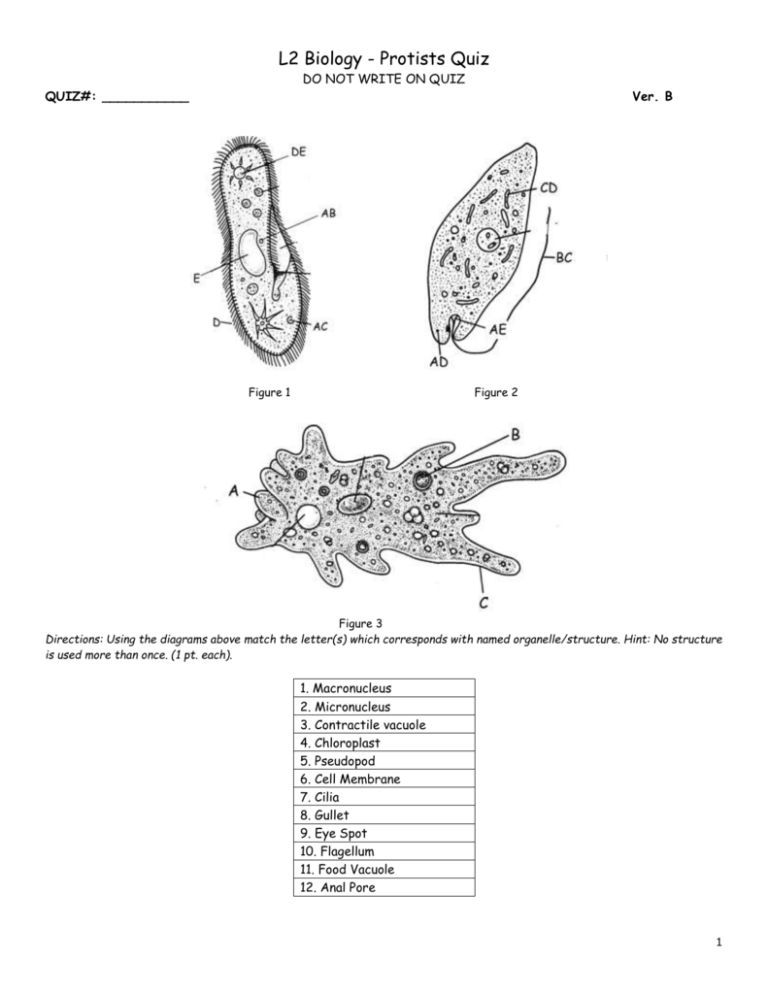41 diagram of protist
An amoeba (/ ə ˈ m iː b ə /; less commonly spelled ameba or amœba; plural am(o)ebas or am(o)ebae / ə ˈ m iː b i /), often called an amoeboid, is a type of cell or unicellular organism which has the ability to alter its shape, primarily by extending and retracting pseudopods. Aug 25, 2021 · The evolutionary relationships in this diagram were determined by comparing ribosomal RNA. The kingdoms within each domain are also shown. Note that under Eukaryota, all of the kingdoms besides ...
FOSS Next Generation © The Regents of the University of California Can be duplicated for classroom or workshop use. Diversity of Life Course Investigation 3: The Cell

Diagram of protist
Protoctists are microscopic single-celled organisms. Some protoctists, such as Amoeba, have features like an animal cell. Others, such as Chlorella, have chloroplasts and are more like plants ... SWIFT OPTICAL INSTRUMENTS, INC. Microscopes • Digital Imaging Products 1-800-523-5544 San Jose • San Antonio www.swiftoptical.com Pond Life: Macro & Microscopic Views Lesson Plan Page 4 Researching the Protists Next to your diagram of each protist, provide the Protist Mini Quiz #3 1. What are the three groups of protists? 2. Name two of the four types of green protists 3. What does "protozoan"mean? 4. How are animal-like protists classified? 5. List one thing that a pseudopod is used for.
Diagram of protist. ADVERTISEMENTS: The following points highlight the two important methods of reproduction in protists. The methods are: 1. Asexual Reproduction 2. Sexual Reproduction. Method # 1. Asexual Reproduction: It involves only one parent. All the young ones produced asexually have the same genetic constitution as that of the parent and are called clones. ADVERTISEMENTS: Asexual reproduction […] Bacteria, Protists, and Fungi Academic Standard—4: Students recognize that plants and animals obtain energy in different ways, and they can describe some of the internal structures of organisms related to this func-tion. They examine the similarities and differences between humans and other species. They use Euglena is a motile, single-celled (unicellular) organism that is commonly found in aquatic habitats. They were among the first organisms in the kingdom Protista to be seen under the microscope, looking like a tiny particle making small movements in the water. Euglena is generally green in color due to the presence of chloroplast, the organelle ... A Paramecium is a free-living, motile, single-cell (unicellular) organism belonging to the kingdom Protista that are naturally found in aquatic habitats. They have a lifespan of a hundred, a thousand or even a million years. They are the most common of all ciliate organisms that are characterized by the presence of cilia all along their transparent and colorless body.
Paramecium. A single cell protist that moves and eats using cilia. It is a heterotroph. Paramecium are capable of both sexual and asexual reproduction. Amoeba. A single cell protist that moves by stretching its cytoplasm into pseudopods or false feet. Surrounds and engulfs its food. It is a heterotroph. A protist (/ ˈ p r oʊ t ɪ s t /) is any eukaryotic organism (that is, an organism whose cells contain a cell nucleus) that is not an animal, plant, or fungus.While it is likely that protists share a common ancestor (the last eukaryotic common ancestor), the exclusion of other eukaryotes means that protists do not form a natural group, or clade. Therefore, some protists may be more closely ... Protist Internal Structure. Because protists are eukaryotes, each protist cell contains a nucleus. This nucleus protects the protist's DNA, which is the blueprint or code that runs every function ... Friday, April 9th 2021. | Diagram. Cell Membrane Protist. All protist cells are surrounded by a cell membrane, which is a fluid, protective layer that helps to separate the protist cell from its external environment, keeping everything inside safe and. Single protist cells range in size from less than a micrometer to thousands of square meters ...
Protists are microscopic organisms. Cell structure is eukaryotic. Protists is surrounded by plasma lemma (cell membrane). There may be an outer covering of pellicle, cuticle, shell or cellulose wall. It contains organelles like mitochondria, Golgi complex, endoplasmic reticulum, 80S ribosomes, etc. They have typical 9+2 fibrils. Protist Image Data: PID: Primary Immunodeficiency Disease: PID: ... Process & Instrumentation Diagram (also seen as P&ID) PID: Process Identification Document: PID: Apr 28, 2017 · Central Vacuole Definition. The central vacuole is a large vacuole found inside of plant cells. A vacuole is a sphere filled with fluid and molecules inside a cell.The central vacuole stores water and maintains turgor pressure in a plant cell. organisms, some scientists classify protists by their method of obtain-ing nutrition. Prot ists are divided into three groups using this method: animal-like protis ts, plantlike protists, and funguslike protists. The protozoan (proh tuh ZOH un) (plural, protozoa or protozoans), shown in Figure 19.1, is an example of an animal-like protist because
- Protists Facts and Types - Animal Like, Plant Like, Fungus Like For most individuals, the first images seen through the lens of a microscope are protists-- unicellular organisms that don't possess enough characteristics to be defined as purely plant or animal.. The organisms within the Kingdom Protista contain a nucleus, like all Eukaryotes, and are categorized as plant-like, animal-like ...
Sep 21, 2021 · In Protist Cells. Protists such as Amoeba, Paramoecium, Giardia possess a specialized vacuole called a contractile vacuole. They mainly use these vacuoles to regulate the water content in their cells (osmoregulation). Freshwater protists tend to absorb too much water into their cells, which may lead to cell rupture.
Some protists also produce oxygen and may be used to produce biofuel. Protists are the primary sources of food for many animals. In some rare cases, Protists are harvested by humans for food and other industrial applications. Phytoplankton is one of the sole food sources for whales; Seaweed is an alga, which is considered a plant-like protist.
Single cell protist that is both a heterotroph and an autotroph. It has an eyespot and a flagellum. Reproduce asexually through binary fission. Paramecium. A single cell protist that moves and eats using cilia. It is a heterotroph. capable of both sexual and asexual reproduction.
There are over 100,000 described living species of protists, and it is unclear how many undescribed species may exist. Since many protists live as commensals or parasites in other organisms and these relationships are often species-specific, there is a huge potential for protist diversity that matches the diversity of hosts.
Animal Like-Protists ( Flowchart) Use Creately's easy online diagram editor to edit this diagram, collaborate with others and export results to multiple image formats. We were unable to load the diagram. You can edit this template on Creately's Visual Workspace to get started quickly. Adapt it to suit your needs by changing text and adding ...
The World of Protists. For Students 9th - 12th. In this protists worksheet, students will look at 3 diagrams showing the steps of how an amoeba finds and eats its food. Students will complete 2 short answer questions based on the diagrams. Get Free Access See Review.

Paramecium Caudatum Diagram Single Celled Protists Animal Royalty Free Cliparts Vectors And Stock Illustration Image 71810369
The cell cycle, or cell-division cycle, is the series of events that take place in a cell that cause it to divide into two daughter cells. These events include the duplication of its DNA (DNA replication) and some of its organelles, and subsequently the partitioning of its cytoplasm and other components into two daughter cells in a process called cell division.
Protists use cilia, pseudopods, or flagella to move. Protist Reproduction. Protists have complex life cycles. Many have both asexual and sexual reproduction. An example is a protist called Spirogyra, a type of algae, shown Figure below. It usually exists as haploid cells that reproduce by binary fission.
Draw and label a detailed picture of each protist (DO NOT RUSH THROUGH THIS ASSIGNMENT). Each drawing needs to be ¾-1 page in size. Place a title at the top of each page/picture. On the bottom of each picture, place the following information about each protist: method of movement. how they obtain/get food. how they reproduce. any unusual ...
Protist Definition. Protists are a group of loosely connected, mostly unicellular eukaryotic organisms that are not plants, animals or fungi.There is no single feature such as evolutionary history or morphology common to all these organisms and they are unofficially placed under a separate kingdom called Protista. Therefore, protists are no longer a formal classification, and different members ...
Plasmodium, commonly known as malaria parasites, may be described as a genus of intracellular parasitic protozoa. They are obligate parasites of insects (such as mosquitoes) and vertebrates and thus referred to as digenetic parasites. They require two different hosts in order to complete their life cycle. In vertebrates, they multiply within ...
Protist ReproductionProtists usually reproduce asexually by cell division. During cell division, the hereditary material in the nucleus is duplicated, the nucleus divides, and then the cyto-plasm usually divides. The result is two new cells that are geneti-cally identical. Asexual reproduction of many-celled protists
Identify the kingdom that contains protists Draw a diagram of a protist cell Define mitochondria and Golgi bodies Find the nucleus of a protist cell; Practice Exams. Final Exam
Protista Classification The kingdom Protista (in the five kingdom system) contains mostly unicellular eukaryotes. This taxonomic grouping is polyphyletic and based only on cellular structure and life styles not on any molecular evidence. Using molecular biology and detailed comparison of cell structure, scientists

Abstract Oval Shape Tiny Protist Amoeba Organelle Pellicle Parasite Element Line Black Hand Drawn Lab Microbe Icon Sign Symbol Pictogram Diagram Sketch Art Doodle Cartoon Style Design Closeup View Royalty Free Cliparts
May 21, 2019 · Prokaryotic and eukaryotic cells are the only kinds of cells that exist on Earth. Prokaryotes are mostly unicellular organisms that lack nuclei and membrane-bound organelles. Eukaryotes include larger, more complex organisms such as plants and animals. They are capable of more advanced functions.
A protist is any eukaryote that cannot be classified as a plant, animal, or fungus. There are several types of protists. We will be learning about three types of protists: protozoans, algae, and decomposers. In this lab you will be observing a type of protist called a protozoan. A protozoan is a protist that is similar to an animal.
Protists exhibit a great deal of variation in their life histories (life cycles). They exhibit an alternation between diploid and haploid phases that is similar to the alternation of generations found in plants. Protist life cycles vary from diploid dominant, to haploid dominant. A generalized eukaryote life cycle is shown in Figure 1.
Protist Mini Quiz #3 1. What are the three groups of protists? 2. Name two of the four types of green protists 3. What does "protozoan"mean? 4. How are animal-like protists classified? 5. List one thing that a pseudopod is used for.
SWIFT OPTICAL INSTRUMENTS, INC. Microscopes • Digital Imaging Products 1-800-523-5544 San Jose • San Antonio www.swiftoptical.com Pond Life: Macro & Microscopic Views Lesson Plan Page 4 Researching the Protists Next to your diagram of each protist, provide the

Vector Euglena Cross Section Diagram Representative Protists Euglenoid Plant Like And Animal Like Microscopic Creature With All Cell Parts Nucleus Flagellum Eyespot Basal Body Pellicle Mitochondrion Stock Illustration Download Image Now
Protoctists are microscopic single-celled organisms. Some protoctists, such as Amoeba, have features like an animal cell. Others, such as Chlorella, have chloroplasts and are more like plants ...

































Comments
Post a Comment